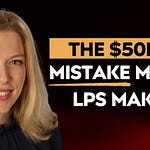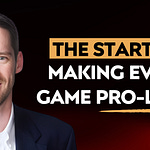Peter Livingston isn’t your typical venture capitalist. He didn’t raise a traditional fund out of the gate. He didn’t work at a Tier 1 firm. He didn’t even make a lot of money from his first successful startup. But he did go on to back over 450 companies—including multiple unicorns like Zepto, Jeeves, and Yassir—and build one of the most interesting models in early-stage investing today: Unpopular Ventures.
In this conversation on the Ignite VC podcast, host Brian Bell dives deep with Peter to unpack his contrarian thesis, investing philosophy, and the lessons learned across a decade of high-volume angel and venture investing.
From Operator to Investor: A Path Forged by Frustration
Peter began his career as the first engineer at iRhythm, a now-public medical device company. Despite playing a lead role in product development and helping scale the company, Peter found himself under-compensated and undervalued. Repeatedly denied equity increases, he realized that technical excellence wasn’t always rewarded in early-stage startups—especially for young engineers without credentials.
That realization, combined with encouragement from family and colleagues, led him to pursue an MBA at Stanford. During the program, he launched a startup with a classmate and received a term sheet from Kleiner Perkins. But what should have been a dream scenario turned into one of his hardest professional experiences—infighting, pivots, and ultimately failure. And yet, Peter credits that failure with giving him more practical insight than any classroom.
The Unpopular Origin Story: Syndicates, and Scaling Fast
While at GE Ventures (a short-lived corporate VC arm), Peter began angel investing on the side. One of his first bets, Chubbies Shorts, performed well—and then he got deep into crypto. This interest led to the founding of Unpopular Ventures in 2019. Peter struggled to raise a conventional VC fund, so he turned to AngelList and began doing SPVs instead. The results were staggering:
$5M deployed in year one
$12M in year two
$20M in 2021
Unpopular Ventures now runs a rolling fund (~$4.5–$5M/year) alongside SPVs and has built a high-efficiency machine for backing early-stage companies worldwide.
Why High-Volume, Low-Check Investing Wins
Peter and Brian are aligned on a shared philosophy: making 100–150 investments per year with small checks (typically $25K–$50K). While some VCs scoff at this "spray and pray" strategy, both argue it's actually well-supported by math, especially at pre-seed and seed. Why?
Power law dynamics: One investment can return the entire fund (e.g., Zepto 86x on paper from a 25K check).
Diversification: Broad exposure increases the probability of hitting outliers.
Learning velocity: More reps means faster learning and stronger pattern recognition.
Network compounding: Each investment adds nodes, increasing access to new deals.
The goal isn’t to be right 100 times—it’s to make enough calculated bets that one or two massive outcomes define the returns.
What Peter Looks for in Founders (and What He Avoids)
When evaluating early-stage startups, Peter rarely focuses on the idea itself. Instead, he looks for signals of founder exceptionalism:
Prior startup experience (even failed ones)
Technical shipping history (teenage app launches, hackathons, side projects)
Elite credentials or early signs of relentlessness
Or evidence of traction with no outside help
Red flags? Founders with no history of building or selling anything, pitch decks without execution, or attempts to fundraise purely off an idea without groundwork. As Peter puts it, “The idea matters less than what they’ve already done with it.”
Investing in Emerging Markets: A Risk-Stacking Framework
Unpopular Ventures does about half of its investing outside the U.S., especially in emerging markets like Latin America, Africa, and Southeast Asia. But Peter is intentional about how he underwrites risk: he doesn’t take new idea risk and geographic risk at the same time.
In other words, if he’s investing in Algeria or India, he wants to see a proven model being localized—think Instacart for India (Zepto) or Uber + Payments for French-speaking Africa (Yassir). This “copycat in a new market” strategy echoes the Rocket Internet playbook and avoids piling unknowns on top of each other.
Why LPs Get It Wrong—and What Emerging Managers Can Do
Peter also highlights a major LP blindspot: the tendency to avoid backing emerging managers unless they’ve already proven returns with other people’s money. This chicken-and-egg issue often forces founders like him to start with syndicates or rolling funds, even if they have a strong personal track record.
Rather than chase fund-of-funds, Peter leans into AngelList’s network and distribution. It’s more efficient, transparent, and attracts LPs who align with his model.
Final Advice to Emerging Managers
Start small, but start: Kleiner Perkins' first fund was $4M. Chris Sacca’s was $8M. Just ship.
Own your model: There are many ways to win in venture. Don’t chase someone else’s strategy.
Think in decades: Track record compounds. Patience wins.
Invest in founders you’d back twice: Peter’s best deals often come from repeat founders—even those who failed the first time.
👂🎧 Watch, listen, and follow on your favorite platform: https://tr.ee/S2ayrbx_fL
🙏 Join the conversation on your favorite social network: https://linktr.ee/theignitepodcast
Chapters:
Welcome & Guest Introduction (00:01 – 01:06)
From Engineer to Investor (01:07 – 05:14)
The Value Disconnect in Engineering (05:15 – 09:49)
Stanford MBA and a Startup Failure (09:50 – 14:37)
Valuations Then vs. Now (14:38 – 17:00)
Leaving Corporate VC Behind (17:01 – 19:04)
Angel Investing (19:05 – 21:55)
The Founding of Unpopular Ventures (21:56 – 23:08)
Scaling with SPVs on AngelList (23:09 – 26:00)
High-Velocity Investing & Portfolio Construction (26:01 – 28:32)
Venture Diversification vs. Spray and Pray (28:33 – 31:00)
Fund-of-Funds Incentives & Industry Dynamics (31:01 – 37:05)
The Yassir Bet: Super App in Africa (37:06 – 44:37)
When Founders Invest Their Own Capital (44:38 – 46:44)
Managing Risk in Emerging Markets (46:45 – 50:10)
What Great Founders Look Like (50:11 – 53:00)
Red Flags and Hard Passes (53:01 – 55:33) Build First, Pitch Later (55:34 – 59:00)
Lessons from 450+ Investments (59:01 – 01:04:20)
Final Thoughts & VC Advice (01:04:21 – 01:07:19)
Outro & Where to Find Peter (01:07:20 – 01:07:43)










